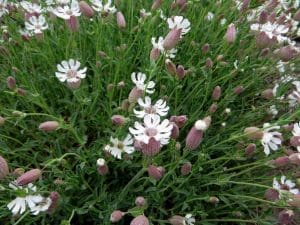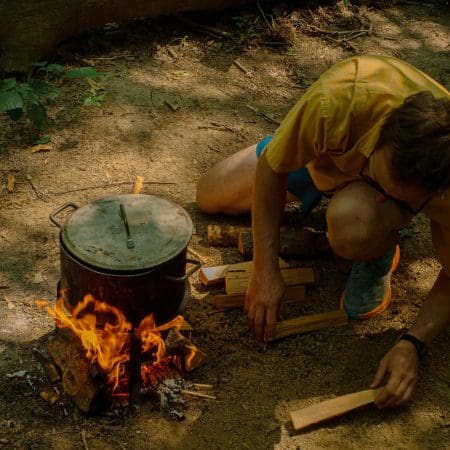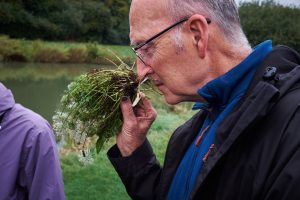Bladder Campion / Summer / Autumn / Edible
Young leaves of bladder campion have a sweet flavour like a combination of honey and peas. Use in salads, blanch or steam or stir fry briefly.
Common Names
Bladder Campion, Maidenstears
Botanical Name
Silene vulgaris
Scientific Clasification
Kingdom – Plantae
Order – Caryphyllales
Family – Caryophylllaceae
Genus – Silene
Known Hazards & Lookalikes
Can be confused with White Campion (Silene latifolia), which is mildly toxic as it contains saponins. The White Campion is more hairy than the Bladder Campion, its flowers are larger (25-30mm in diameter) and its calyx is less swollen.
Range and Distribution
Found throughout Europe and the British Isles except for high altitudes.
Habitat
Loose soils in open/partially shaded places such as hedgebanks, open woodland, cultivated fields, walls, quarries, gravel pits, disturbed ground on dry calcareous soils.
Physical Charectaristics of Bladder Campion
An upright, hairless or sometimes pubescent perennial, up to 90cm high.
Leaves
Leaves are waxy, grey and hairless, quite rubbery to touch; oval, ending in a point with a distinct midrib; stalkless, except for the basal leaves, in opposite pairs, with each successive pair rotated at right angles to the previous one.
Flowers
The flowers are white, 10-18cm in diameter, with five notched/forked petals and a pale or pink, ribbed and swollen, bladder-like calyx tube. The calyx tube is veined with 20 main veins, narrowing at the apex and ending in upright teeth. The flowers tend to droop. The calyx tube becomes a distinctive bladder-shaped seed-pod that remains visible well into the winter. The presence of seed-pods helps to identify where the flowers will grow the following year.
Edible Uses of Bladder Campion
Young leaves have a sweet flavour like a combination of honey and peas. Use in salads, blanch or steam, or stir fry briefly. Older leaves are rather bitter but less so when cooked.
Basal leaves are most worthwhile, being easier to pick in quantity and sweeter than later leaves.
In Crete the plant is called agriopapoula and the locals eat its leaves and tender shoots browned in olive oil. It is widely eaten in Cyprus and in recent years has been cultivated and sold in shops in bunches. In Italy the leaves may be used as an ingredient in risotto and the leaves are valued as a green vegetable, for example in a chickpea and Silene vulgaris stew called Potaje de garbanzos y collejas (Collejas being the bladder campion leaves).
Similar Species
White Campion – mentioned above in Known Hazards.
Sea Campion, Silene uniflora, has similar leaves to Bladder Campion but it is a prostrate maritime perennial with a cushion of non-flowering shoots. Its flowers are larger than Bladder Campion (20-25cm). The calyx doesn’t narrow at the apex as seen in Bladder Campion and the teeth of the bladder are recurved rather than the erect teeth seen in the Bladder Campion.

Ecology
It is one of the main food plants of the Frog-hopper insects which are known for surrounding themselves with a protective froth while feeding. The froth is often known as Cuckoo Spit.
















